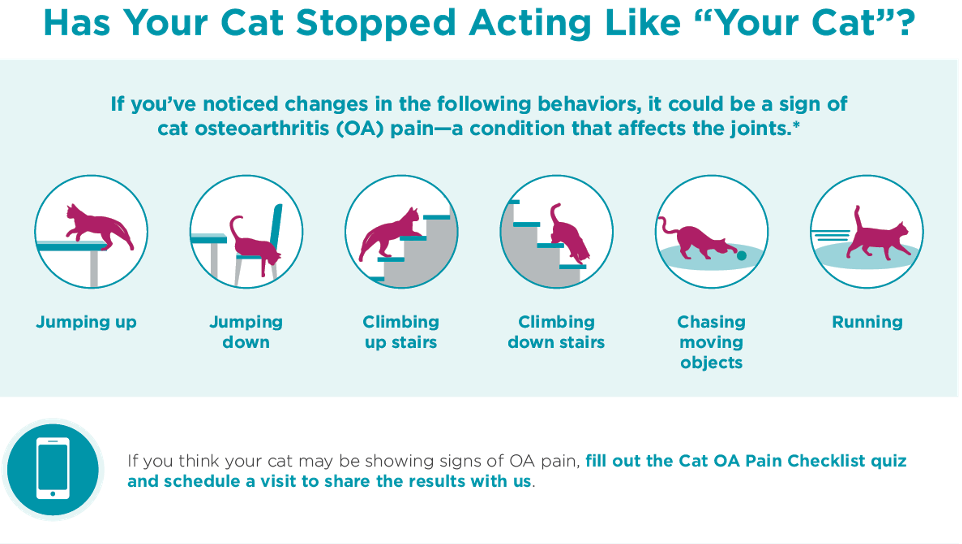Feline osteoarthritis, commonly known as arthritis in cats, is a joint disease that causes cartilage to become worn down. Now, your cat’s bones are rubbing against each other, causing chronic pain that is always there. Osteoarthritis is the most widely underdiagnosed disease among cats and is expected to occur around six years and older, although various factors can cause it to occur in younger felines. Osteoarthritis causes pain 365 days a year at different levels, affecting your cat’s quality of life.
Recognizing the symptoms of feline osteoarthritis is essential for early diagnosis and intervention. Cats are known for masking pain, making it challenging for owners to identify signs of discomfort. Common symptoms of feline osteoarthritis include:

Diagnosing feline osteoarthritis involves a combination of owner observation, physical examination, and diagnostic imaging like X-rays.

While feline osteoarthritis is a progressive condition with no cure, various management strategies can alleviate pain and improve the cat’s overall comfort. These include:
Feline osteoarthritis is a common and often underdiagnosed condition that significantly impacts a cat’s quality of life. Recognizing the signs, obtaining an accurate diagnosis, and implementing a comprehensive management plan is crucial for effectively addressing this degenerative joint disease. By focusing on weight management, dietary supplements, pain control, physical therapy, and environmental modifications, owners can help improve the well-being of their arthritic cats and provide them with a comfortable and fulfilling life.